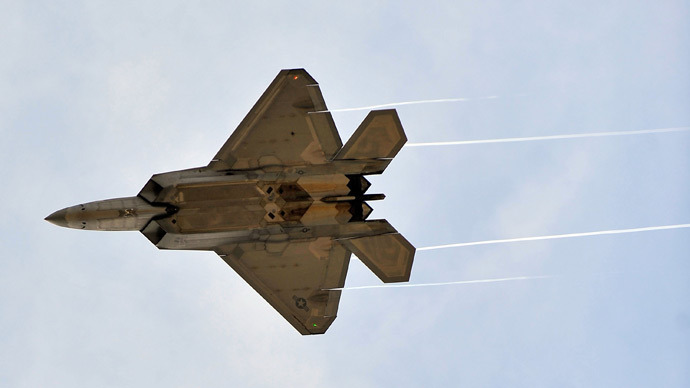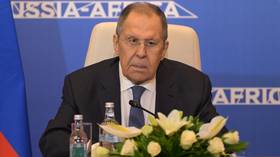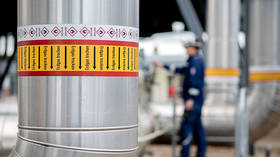Korean Peninsula ‘on a knife edge’

Pyongyang says it is in a 'state of war' with South Korea following the latest round of sanctions over its nuclear test two months ago. Seoul warned that it’s ready to carry out a pre-emptive strike on its neighbor, if they believe an attack is imminent.
The United States has sent F-22 stealth fighter jets, to participate in ongoing military exercises with South Korea. The move is highly controversial and can be interpreted differently, James Corbett, host of the Corbett Report told RT.
RT:We know tension is running high on the Peninsula .Why are Seoul and Washington holding military exercises at such a sensitive time?
James Corbett: I suppose the official answer to that would be that it’s just part of annual joint military drills that are held always around this time of year. But I think that we have to see that this being done in the midst of this provocation and this rising tension as a self-admitted attempt to ratchet up things, and to put a little bit of pressure on Pyongyang. I think that this has to be seen as an attempt to try to rain in some of this bellicose rhetoric that we’ve been hearing in the last few days and to try to do something, to put some of the chips on the table. I think that this has the possibility of ratcheting things up to the point where tensions might actually spill over as a result of this, and we saw that recently with the deployment of B-2 nuclear armed bombers in South Korea which is not only, I think, worrying to Pyongyang, but also to China, to have nuclear bombers that close to the peninsula there, on China’s southern border. I think that China wouldn’t be pleased with that either, so this is quite an escalation that’s taking place.
RT:What actions would prompt South Korea to carry out a pre-emptive strike against its neighbor?
JC: Well I don’t know if that’s something that we’re looking at realistically, but the most likely scenario here would be some sort of blunder or misinterpretation on one side or the side because everything is on the knife’s edge. As I’ve said before, I think that all of the players here have interest of keeping the tension up, but not allowing it to spill over. I think that obviously works for North Korea which could be easily wiped out in a military confrontation, but it also works for South Korea and America, and all of the allies here in this region that also serve to benefit from this. We’ve seen this directly, for example, with the announcement of more missile defense in southern-western coast of the United States that are now going to be 14 new ground-based interceptors deployed in Alaska at the cost of US taxpayers, for $1 billion by 2017. So this is doing fantastic business for the defense contractors who serve to feed into this tension and play off it. So, honestly, I don’t think there are plans for pre-emptive strikes at this moment. I think this is more a question of if this will spill accidentally over something more.
RT:Pyongyang claims it has missiles on standby to attack US targets. Is Washington actually taking the North Korean threat seriously?
JC: I think that the thing they keep in mind is that the idea of some sort of nuclear spectre hanging over America at the moment is laughable at best. Certainly, they know that there are wildly inaccurate Taepodongs 2 and 3 missiles, even if they can actually reach the western part of the United States which is really just theoretical at this point. But even if they could, North Korea would be, by best analysts’ estimates, several years away from militarizing nuclear devices onto warheads. And even then, the nuclear devices they have so far come with about one half of the Hiroshima bomb had. [So this is] quite [a] small bomb. This isn’t an imminent threat, this isn’t going to strike out any day now, I think, in that sense this isn’t a threat to the American mainland. That aspect of it is being hyped up, but it serves to justify $1 billion of missile interceptors. I think the defense contractors will be laughing all the way to the bank.
RT:Continued sanctions against Pyongyang have had no effect. Could it be time for the international community to return to negotiations?
JC: There has to be some sort of change to the status quo
here, and it is the question of what sides can be brought to this
table because obviously, the six-party talks have gone nowhere, and
in fact really digressed to the point we’re now at this stage
again. So I think there have to be some different players at the
table. I think ultimately most people are expecting this evolving
into some sort of negotiation between the US and China, whether
directly or indirectly through this confrontation. I think those
are the two main players that are feeding into this right now, and
which really do have Pyongyang in the balance. So I think that it’s
going to involve those parties at some point in some way, but at
this point I just don’t see how this is going to arrive, certainly
not within the framework of this six-party talks as they’ve existed
over the past decade.
The statements, views and opinions expressed in this column are solely those of the author and do not necessarily represent those of RT.












